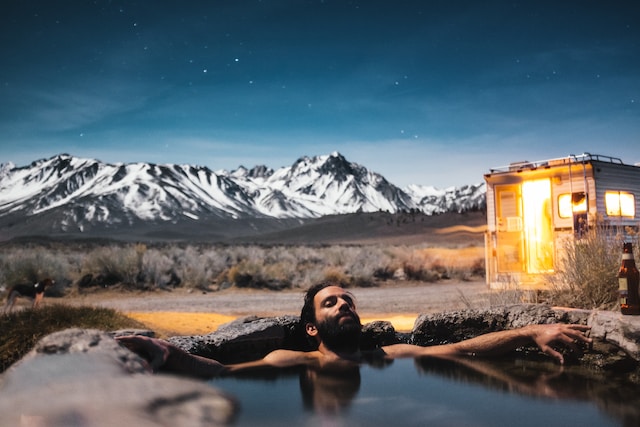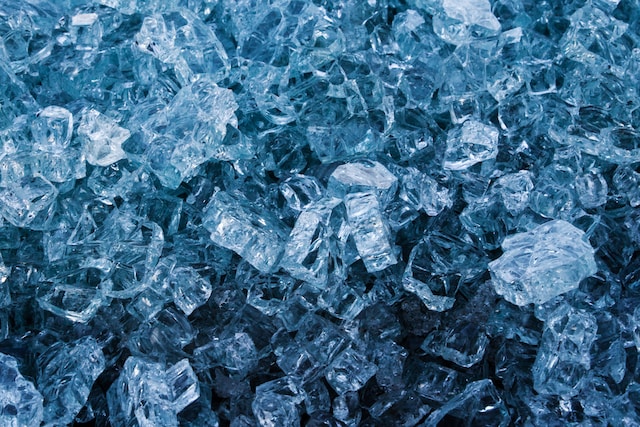In the pursuit of holistic wellness, the integration of contrasting elements often yields remarkable results. One such dynamic combination gaining popularity is the fusion of hot spa pools and cold plunge pools – Hydro and Cryotherapy.
This marriage of opposites, drawing from the science of hydrotherapy and cryotherapy, offers a comprehensive approach to rejuvenation and recovery.
In this article, we will explore and outline the potential benefits and effects of incorporating cold plunge pools alongside their hot counterparts, exploring the science behind this synergy and its impact on both body and mind.
The Science Behind Hydro and Cryotherapy: A Brief Overview
Before taking a look into the science behind the dual-temperature experience, it’s essential to understand the individual benefits of hot and cold therapy.
Hydrotherapy:
Hot spa pools, with their warm, soothing waters, have long been revered for their relaxation-inducing properties.
The heat promotes vasodilation, expanding blood vessels and improving circulation. This, in turn, helps to deliver oxygen and nutrients more efficiently to tissues and organs, facilitating muscle recovery and easing tension.
Additionally, the warmth triggers the release of endorphins, the body’s natural mood enhancers, promoting an overall sense of well-being.
Cryotherapy:
On the flip side, cold plunge pools, inspired by the principles of cryotherapy, involve immersing the body in cold water to stimulate a range of physiological responses.
The sudden exposure to cold causes vasoconstriction, where blood vessels narrow, helping to reduce inflammation and muscle soreness. The body responds by releasing anti-inflammatory agents, promoting faster recovery.
Moreover, the shock of cold water activates the production of norepinephrine, a neurotransmitter associated with increased alertness and energy.

The Yin and Yang of Hydrotherapy and Cryotherapy: A Balanced Approach
When hot spa pools and cold plunge pools are strategically combined, they create a yin-and-yang experience that capitalises on the benefits of both therapies.
The alternating exposure to hot and cold water, known as contrast hydrotherapy, prompts a series of physiological adaptations that contribute to overall wellness.
Enhanced Circulation and Detoxification:
The contrast between hot and cold water induces a pump-like effect on blood vessels, a phenomenon known as vasodilation and vasoconstriction.
This rhythmic expansion and contraction promote improved circulation, flushing out toxins from the muscles and enhancing the delivery of nutrients. The result is a revitalised and detoxified system, which supports cardiovascular health.
Furthermore, the release of endorphins during the hot phase contributes to a sense of euphoria and relaxation, enhancing the overall detoxification process.
Endorphins act as natural painkillers and stress relievers, creating a positive feedback loop that further supports the body’s cleansing mechanisms.
Muscle Recovery and Reduced Inflammation:
The combination of hot and cold therapy offers a powerful solution for muscle recovery and inflammation reduction.
The heat from the spa pool promotes muscle relaxation and helps to alleviate tension, while the subsequent immersion in the cold plunge pool constricts blood vessels, reducing inflammation and swelling.
During the hot phase, the brain releases dopamine, a neurotransmitter associated with pleasure and reward.
This not only contributes to the overall sense of relaxation but also plays a role in the brain’s reward system, reinforcing the positive aspects of the therapeutic experience.
As the body experiences the cold plunge, the release of norepinephrine comes into play. Norepinephrine not only enhances alertness and cognitive function but also acts as a natural analgesic, dampening pain signals and supporting the body’s recovery from muscular stress.
Stress Reduction and Mental Clarity:
The contrasting sensations of hot and cold water have a profound impact on the nervous system.
The warmth of the hot spa pool induces relaxation and soothes the mind, while the invigorating cold plunge activates the release of norepinephrine, promoting alertness and mental clarity.
During the hot phase, the brain releases serotonin, a neurotransmitter associated with mood regulation and an overall sense of well-being. This contributes to stress reduction, anxiety relief, and an improved mental state.
The subsequent cold plunge, with its release of norepinephrine, provides a refreshing burst of energy, counteracting any potential lethargy associated with stress.
This combination of neurotransmitters, from serotonin to norepinephrine, creates a harmonious balance in brain chemistry, promoting mental resilience, focus, and emotional well-being.
Boosted Immune Function:
The stimulation of the circulatory and lymphatic systems through contrast hydrotherapy supports immune function.
The improved circulation facilitates the movement of immune cells throughout the body, enhancing the body’s ability to defend against illnesses.
During the hot phase, the body’s release of oxytocin, often referred to as the “love hormone,” is stimulated.
Oxytocin has anti-inflammatory properties and plays a role in immune regulation, contributing to the overall fortification of the immune system.

Creating your own Cryotherapy Cold Plunge Tank
Already have a spa pool, but are not sure where to get started on setting up your own cold plunge tank? Here is a simple guide on how to set up your own cryo pool and start reaping the benefits:
- Find a suitable tub.
While some people choose to build their own custom tubs or use a large enough chest freezer in order to keep the water icy at all times, for starting out, you don’t need to break the bank.
You can find cheap tubs from your local hardware shop that work perfectly, as long as you are able to sit down in them and be covered up to your neck in water, it will work, alternately, even a trough for use on farms will work, and they are made to withstand outdoor climates, so you do not need to worry about the material degrading over time.
- Water Supply
Make sure you have a hose or tap nearby so that it is easier to refill the water whenever you need to, instead of hauling out buckets of water to fill it up every time you feel like a cold plunge.
- Have Ice on hand
Depending on the size of your tub, make sure you have enough ice nearby to be able to cool the water down to the temperature you want – 10°C to 15°C. Consider using reusable ice packs, or frozen water bottles to make it easier to reuse in the future.
- Thermometer
Stick a thermometer in the water so you know when it’s the right temperature. This prevents you from having to stick your foot into the cold water, only to discover it’s not yet cold enough to get the full benefits.
It also lets you see exactly how cold you can tolerate, and you will be able to gradually work your way to colder and colder temperatures.
- Aeration (Bubbles)
Finally, consider adding in an aeration system, that dispenses bubbles, similar to a commercial cold plunge pool, or a spa pool. See this article to find out exactly why spa pools have bubbles – and all the benefits it brings.
Practical Tips for Incorporating Dual-Temperature Therapy:
Establishing a Routine for Effective Cryotherapy:
Design a personalised routine that alternates between hot spa sessions and cold plunges for cryotherapy.
Begin with 10-15 minutes in the hot spa pool, allowing your body to absorb the therapeutic warmth.
Follow this with a quick immersion in the cold plunge for 1-2 minutes to kickstart the circulatory and nervous systems, using the effects of cryotherapy.
Repeat the cycle for a total duration of 30-45 minutes. Consistency is key to maximising the cumulative benefits over time.
Adjusting Temperatures:
Tailor the temperatures to individual preferences and tolerance levels.
The hot spa pool is typically set between 37°C to 40°C for a comfortably warm experience.
Meanwhile, maintain the cryotherapy pool at a refreshing 10°C to 15° to invigorate the body.
Experiment with temperatures to find the balance that works best for you, ensuring a pleasant and effective dual-temperature therapy.
Hydration and Aftercare:
Stay well-hydrated throughout the session by sipping on water to support the body’s natural cooling mechanisms.
After the dual-temperature therapy session, gradually cool down by either sitting in a comfortable environment or taking a lukewarm shower.
Consider incorporating light stretching or relaxation techniques to enhance the overall therapeutic effects and promote a smooth transition back to regular activities.
Mindful Breathing Techniques:
Integrate mindful breathing exercises into your dual-temperature therapy routine. Focus on deep, diaphragmatic breaths to enhance relaxation during the hot phase and invigorate the body during the cold phase.
Mindful breathing not only complements the physiological benefits of the therapy but also promotes mental clarity and stress reduction.
Incorporate Aromatherapy:
Elevate your dual-temperature therapy experience by incorporating aromatherapy. Choose scents that align with your relaxation or invigoration goals.
Lavender, chamomile, and eucalyptus are popular choices for the hot phase, promoting relaxation, while peppermint or citrus scents can enhance alertness during the cryotherapy phase.
Pair with Gentle Exercises:
Consider incorporating gentle exercises into your routine, especially during the hot phase.
Water provides buoyancy, reducing the impact on joints and allowing for low-impact exercises.
Stretching or light yoga movements in warm water can enhance flexibility and promote muscle relaxation.
Cryotherapy: A Holistic Approach to Wellness
Incorporating both hot spa pools and cold plunge pools into your wellness routine offers a multifaceted approach to health and rejuvenation.
The synergy between these contrasting elements creates a harmonious balance, addressing of physical recovery, mental well-being, and immune support.
The benefits of cold and hot water therapy release a multitude of good chemicals into your brain, such as Endorphins, Norepinephrine, Serotonin, and Oxytocin. This process also helps with your circulation, muscle recovery, and immune system.
Whether you’re seeking relief from muscle tension, aiming to enhance athletic performance, or simply desiring a comprehensive wellness experience, the combination of hot and cold therapy provides a transformative journey towards optimal health.
Embrace the harmony of heat and chill for a rejuvenated, invigorated, and balanced life. If youre looking to incorporate cryotherapy into your daily life, but dont have a spa, check out our guide to understanding spa pools for sale.
